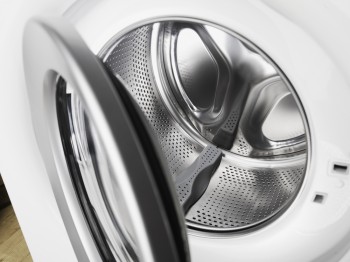

- Fumy smell in washer oom how to#
- Fumy smell in washer oom manual#
- Fumy smell in washer oom portable#
- Fumy smell in washer oom professional#
For instance, use the right detergent for your model to reduce leftover suds and, if possible, make sure your last wash cycle of the day is set to hot. With a few small changes to your laundry routine, you can also prevent those unwanted odors from ever returning.
Pour two cups of white vinegar into your empty washing machine. Combine 1/4 cup of water with 1/4 cup of baking soda pour into the soap dispenser. Either use an off-the-shelf washing machine cleaner or try the following DIY method: 
Fumy smell in washer oom portable#
This sometimes is confused with the rotten-egg smell, but it’s less eggy and more like the smell of an outhouse or a portable toilet.
Drum: Luckily, you don't have to get hands-on to clean your washer's largest component! Instead, you can have the washer wash itself. A sewage smell coming from a bathtub drain can indicate a problem with the plumbing system, such as a clog or backup. Fumy smell in washer oom manual#
You may also be able to run it through the dishwasher just be sure to check your user manual first. Remove the dispenser, soak it in hot water, and give it a thorough scrub with that old toothbrush again. Left unchecked, this gunk will become the perfect breeding ground for stinky bacteria. But stubborn soap build-ups will inevitably accumulate in these dispensers over time.
Dispensers: Most newer washing machines have removable detergent, bleach, and/or softener dispensers, whether they're drawers or cup inserts. If not, don't be tempted to use harsh chemical cleaners or steel wool-instead, opt for an old toothbrush and white vinegar. In fact, hot soapy water and an old rag should be all you need. Whether you have a front- or top-loading model, it's simple to get the door or lid seals clean again. Seals and gaskets: Mold, soap scum, and other build-ups are all too easy to see on your washer's seals. The key is using the right cleaning solutions, tools, and techniques to ensure completely spotless results. You shouldn't have too much trouble reaching the residue on drums, seals, gaskets, and dispensers. Symptoms include wheezing, rashes, watering eyes, red eyes, itchy eyes, and a runny nose.Fortunately, that moldy or eggy smell is likely coming from parts of your washing machine that can be easily cleaned. Fumy smell in washer oom professional#
If you don't see any mold, but have any of the following symptoms, consider having a professional mold inspection done in your bathroom.
Recognize the symptoms of mold exposure. Mold commonly begins to grow around the pipes under the sink, especially if water sometimes leaks out. If these marks resurface after cleaning and seem to expand, you may have a mold problem. You may notice speckles of black along your bathroom ceiling, for example. It may be overlooked or mistaken for soot or dirt. While you may think spotting mold is easy, mold can often be subtle. Dry the area off with a towel and ventilate the area. Fortunately, that moldy or eggy smell is likely coming from parts of your washing machine that can be easily cleaned. Fumy smell in washer oom how to#
Use this solution to scrub away the mold. HOW TO GET RID OF THE SMELL IN YOUR WASHING MACHINE. To clean up mold, mix 2 tablespoons (28 ml) borax, ¼ cup (62 ml) white vinegar, and 2 cups (500 ml) of warm water. Make a point of periodically checking your bathroom for signs of mold. Mold is a common cause of odor in a bathroom. This will clean out the drain, help remove clogs, and neutralize any odor caused by your bathroom's drain.
Once a month, mix half a cup of vinegar with half a cup of baking soda. In many cases, foul-smelling stools occur due to the foods people eat and the bacteria present in their colon. This will help flush out any dirt and debris that may be causing bathroom odor. Foul-smelling stools have an unusually strong, putrid smell. Use hot water, leaving the tap running for several minutes. You can also use a plunger, plunging the drain 5 to 6 times, if a coat hanger fails to address a clogged drain. You can either push the clog through or pull it out using the hanger. You can use a straightened coat hanger or a Zip-It tool to reach down the drain. You can use white vinegar and water to clean a drain stopper. Remove the drain stopper and clean off any hair, dirt, or debris on the stopper. You should also take measures to prevent drains each month. Make sure to clean out drains if you notice water backing up frequently. Clogs in drains are frequently the cause of bathroom odor.






 0 kommentar(er)
0 kommentar(er)
